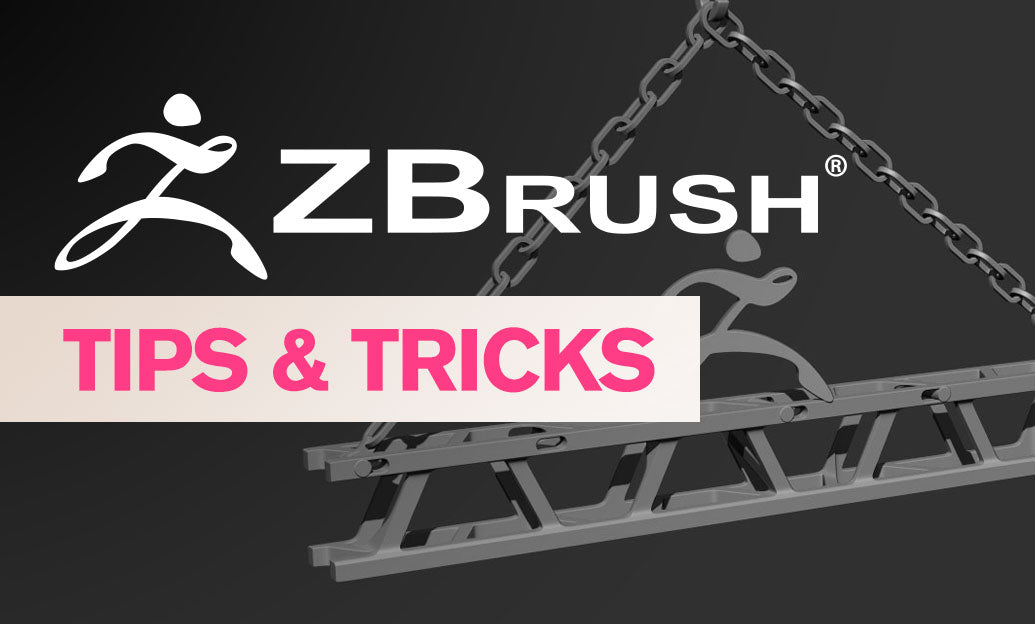Your Cart is Empty
Customer Testimonials
-
"Great customer service. The folks at Novedge were super helpful in navigating a somewhat complicated order including software upgrades and serial numbers in various stages of inactivity. They were friendly and helpful throughout the process.."
Ruben Ruckmark
"Quick & very helpful. We have been using Novedge for years and are very happy with their quick service when we need to make a purchase and excellent support resolving any issues."
Will Woodson
"Scott is the best. He reminds me about subscriptions dates, guides me in the correct direction for updates. He always responds promptly to me. He is literally the reason I continue to work with Novedge and will do so in the future."
Edward Mchugh
"Calvin Lok is “the man”. After my purchase of Sketchup 2021, he called me and provided step-by-step instructions to ease me through difficulties I was having with the setup of my new software."
Mike Borzage
Enhancing Design Handover with Integrated Documentation Tools for Seamless Collaboration and Innovation
October 03, 2025 9 min read


Introduction
In today’s rapidly evolving design and manufacturing environment, the art of transferring design information with precision and clarity is more fundamental than ever before. The emergence of sophisticated design software has not only redefined the creative process, but it has also underscored the necessity for meticulous documentation to ensure project continuity and smooth collaboration across teams. In this blog post, we delve into the multifaceted challenges associated with design handovers, explore the transformative impact of integrated documentation tools, and present effective strategies for streamlining the handover process. By examining these advanced topics, readers will gain insight into how accurate, timely, and accessible documentation underpins every phase of a project—from conceptual design to production and beyond. This discussion is particularly relevant in industries such as additive manufacturing, product visualization, engineering computation, and architectural design where precision and clarity are paramount. As we move forward into the details that follow, the focus remains on equipping professionals with the insights needed to overcome inherent challenges and embrace advanced digital tools that are reshaping project delivery.
Understanding the Design Handover Challenge
The process of design handover is an essential, yet often underestimated, aspect of modern design projects. It involves transferring a complex set of project documents, models, specifications, and iterative design decisions from one team or phase to another. This phase of the project lifecycle is critical since any lapse in transferring key design information may lead to costly delays, misinterpretation of critical data, and ultimately compromise the integrity of the final product. In many instances, projects can suffer from fragmentation when there is a lack of cohesive documentation strategies, resulting in miscommunication between designers, engineers, and manufacturing teams. Professionals in various design fields recognize the importance of **documentation accuracy** and **timeliness**, which directly influence the quality and feasibility of a project. This challenge becomes even more pronounced in projects that leverage digital prototyping, computer-aided design, and additive manufacturing, where the volume and complexity of data require not only careful management but also seamless connectivity between different software tools and teams. Moreover, the prevalence of revisions and the iterative nature of design add further complexity to the handover process. Failure to maintain a robust, updated, and easily accessible record of design changes can severely impact downstream processes, such as production planning and quality assurance.
Challenges in Document Transfer
One of the primary hurdles in the handover process is ensuring that every minute detail is captured accurately and transmitted to the relevant stakeholders. The design process inherently involves multiple iterations, each contributing new layers of complexity to the documentation. When documents are poorly organized, lack version control, or are delayed in transit, teams across the project spectrum may experience inefficiencies or errors when executing subsequent tasks. Additionally, **project continuity** hinges on the ability of teams to access up-to-date information quickly. Inefficient handover procedures can lead to disjointed workflows where critical updates are missed or misinterpreted, thereby affecting project timelines. This is particularly significant in environments where design specifications are continuously evolving due to client needs or unforeseen technical challenges. The absence of a standardized communication protocol during the handover process can result in repeated back-and-forth clarification, further hampering productivity and innovation.
The Role of Documentation Accuracy and Timeliness
Maintaining excellence in documentation accuracy and timeliness is not merely an administrative requirement; it is a strategic imperative that fosters a collaborative and agile work culture. When design handovers are executed efficiently, they ensure that every member of the project team is aligned in terms of design intent and technical requirements. Detailed documentation supports not only the preservation of design integrity but also empowers teams to innovate with confidence, knowing that each update is meticulously recorded and easily accessible. This precision in data relay helps mitigate potential errors early in the process, allowing for timely interventions that can save both time and resources. Ultimately, the emphasis on acute detail and prompt data exchange serves as a cornerstone for operational success in many high-stakes industries. By understanding these challenges, organizations can begin to transform potential stumbling blocks into opportunities for enhancing communication, collaboration, and overall project performance.
Integrated Documentation Tools in Design Software
Integrated documentation tools have emerged as a pivotal element in modern design platforms, seamlessly blending design and information management into a unified ecosystem. These tools are designed to effortlessly capture, update, and disseminate critical project information throughout the lifecycle of a design project. Today’s integrated platforms integrate functionalities such as version control, real-time collaboration, and cross-functional accessibility that ensure project data remains consistent and comprehensive, irrespective of the stage of development. By embedding these features within design software, organizations can mitigate many of the common pitfalls associated with manual documentation practices. Designers and engineers often grapple with fragmented information when using disparate tools, leading to errors and miscommunication. With integrated documentation, every change is logged and timestamped, thereby promoting transparency and accountability. The result is a more efficient workflow where the **real-time updates** and collaborative features empower teams to work concurrently from different locations while staying in sync with the most current designs and project requirements.
Key Features of Integrated Documentation Tools
Integrated documentation tools offer a myriad of functionalities that support both the granular and holistic aspects of project documentation. These include version control systems, which allow precise tracking of design iterations and revert to previous states if necessary; real-time updates that enable instantaneous sharing and review of design modifications; and customizable access controls that ensure only authorized personnel can modify critical documents. Furthermore, these tools often feature integrated communication modules such as comment threads and notification systems that facilitate collaborative problem-solving. The incorporation of these features into a single platform dramatically reduces the risk of miscommunication and ensures that every team member from engineers to quality assurance experts is working with the latest, most accurate information available. For example, leading design software solutions frequently integrate cloud storage options and intuitive dashboard analytics that streamline decision-making processes and provide detailed insights into project progression. These advancements underline the strategic importance of embedding robust documentation tools directly within the design software, paving the way for more resilient and adaptable project workflows.
Examples of Leading Integrated Platforms
Numerous design platforms have set the benchmark by incorporating **integrated documentation** features at the core of their systems. Sophisticated software solutions now offer an amalgamation of design creativity and data management, ensuring that design handover is not only executed seamlessly but also enhances overall productivity. These platforms are designed with comprehensive features that support the entire design lifecycle, from conceptualization to execution and post-production analysis. They utilize real-time collaboration mechanisms that allow teams to work on centralized projects, regardless of their geographic locations, and include tools for automatic backup and version history management. The ability to integrate project documentation directly within the design environment eliminates the need for external applications, thereby reducing the risk of data silos and information bottlenecks. Additionally, such platforms often allow for customizable workflows that adapt to the unique demands of various industries, ensuring that each design project benefits from a tailored approach to documentation and data management. This level of integration is fundamentally transforming how design projects are managed, leading to smoother, more connected workflows that enhance both individual productivity and team-wide collaboration.
Strategies for Streamlining the Handover Process
Implementing an efficient design handover process is essential for maintaining continuity and ensuring that every team member is equipped with the necessary information for successful project execution. By adopting integrated documentation tools, organizations can align their workflows to support swift and precise data communication. Streamlining the handover process involves the creation of standardized protocols, active training of team members, and the consistent leverage of advanced automation tools. These strategies not only ensure that information is transmitted without loss but also embed a culture of continuous improvement and accountability within the team. Establishing clear and robust protocols for documentation and version control mitigates the risk of errors during the handover, while providing a systematic framework that every team member can adhere to. Moreover, the training and development of teams in using these modern systems effectively are critical to maximizing the utility of integrated documentation tools. In today’s environment, where design complexity is continually increasing, seamless information transfer through the adoption of best practices is not merely desirable but necessary for the maintenance of competitive advantage.
Best Practices for an Integrated Documentation Workflow
Adopting an integrated documentation workflow requires careful planning and meticulous execution. Organizations should begin by establishing standardized protocols that define how project information is captured, recorded, and updated. It is crucial that these protocols promote consistency across the board, ensuring that every team member adheres to the same guidelines and definitions regarding design revisions and updates. Equally important is the adoption of a centralized platform that not only stores and organizes this information but also allows for real-time collaboration and accessibility across departments. Regular training sessions can help reinforce these processes, ensuring team members stay up-to-date with the latest tools and practices. Furthermore, utilizing automation tools reduces the burden of manual data entry and minimizes human error. The following bullet-point list encapsulates some key best practices:
- Establish standardized documentation protocols: Develop clear guidelines for data entry, version control, and change management.
- Leverage automation tools: Utilize software that automates routine documentation tasks, reducing errors and ensuring consistent updates.
- Conduct regular training sessions: Ensure all team members are proficient with the latest integrated documentation tools and workflows.
- Integrate real-time collaboration: Utilize platforms that allow multiple teams to access and update design documents concurrently.
- Maintain a centralized digital repository: Store all project documentation in one accessible location to eliminate data silos.
Team Training and Cultivating a Collaborative Culture
A crucial element in streamlining the handover process is investing in continuous training programs that focus on the nuances of integrated documentation tools. It is not sufficient to simply deploy advanced platforms; teams must also develop the proficiency to harness these tools effectively. Training initiatives should cover a range of topics, from the principles of effective data organization and version control to the practical usage of collaboration features that enable real-time updates. Encouraging a culture where each team member values the integrity of documentation is essential. A collaborative culture built on shared responsibility for data accuracy helps to minimize discrepancies that can arise during handovers. Additionally, promoting open communication and mutual accountability among team members ensures that everyone is working from the same set of updated and verified information—a factor that is indispensable for achieving project success. By fostering an environment where every stakeholder understands the significance of maintaining meticulous and accessible records, organizations lay a strong foundation for operational excellence and continued innovation.
Conclusion
In summary, the effective management of design handovers through integrated documentation tools represents a strategic imperative for today's design-driven industries. By understanding the inherent challenges in the design handover process, organizations can better appreciate the value of **accurate documentation** and **timely information transfer** that underpin project continuity and success. Integrated documentation tools, with their robust features like version control, real-time updates, and centralized accessibility, offer a tangible solution to many of the pitfalls traditionally associated with manual documentation practices. These tools foster an environment where collaboration is amplified, errors are minimized, and project timelines are maintained with improved efficiency. Moreover, streamlining the handover process through standardized practices, continuous training, and the strategic use of automation not only enhances team collaboration but also instills a culture of accountability and precision. The forward-looking trends in documentation integration are poised to further revolutionize how design projects are managed, ensuring that design innovation and detailed documentation coalesce seamlessly. As technology continues to evolve, design professionals are well-equipped to embrace these advancements, paving the way for more resilient, agile, and innovative project workflows in the future.
Future Perspectives on Documentation Integration
Looking ahead, the convergence of artificial intelligence, machine learning, and cloud-based platforms promises to augment the capabilities of integrated documentation tools even further. Future advancements are expected to offer more predictive insights, automated quality checks, and dynamic data visualization features that render complex design information even more accessible. As these technologies mature, they will likely help anticipate issues before they arise, optimize workflows in real time, and provide deeper analytics on project performance. The potential for **seamless collaboration** across increasingly distributed teams will continue to grow, reinforcing documentation as a central pillar in project management. Embracing these technological shifts will be critical for organizations aiming to stay competitive in an industry characterized by rapid innovation and ever-increasing complexity.
Final Reflections on the Impact of Streamlined Handover Processes
Ultimately, the evolution of integrated documentation and the strategies to streamline design handovers offer a promising roadmap for overcoming one of the key obstacles in project management. The ability to effectively share and update design information not only ensures a smoother transition between project phases but also enhances overall operational efficiency and team cohesion. As organizations continue to refine these processes and integrate more sophisticated digital tools, the gap between design conceptualization and production will further narrow. This directly contributes to reducing project delays, minimizing resource wastage, and fostering a culture of continuous innovation. By proactively investing in technology and training, design professionals can expect to see significant improvements in both project outcomes and long-term competitiveness.
Also in Design News

Cinema 4D Tip: Noise Shader Best Practices for Procedural Variation
October 31, 2025 2 min read
Read MoreSubscribe
Sign up to get the latest on sales, new releases and more …




